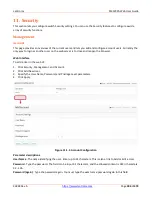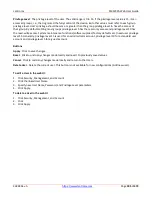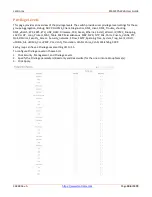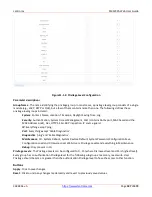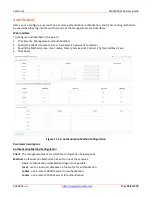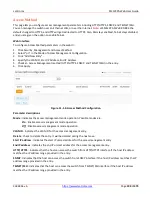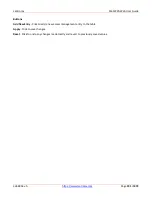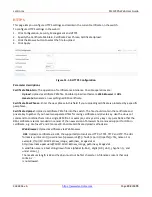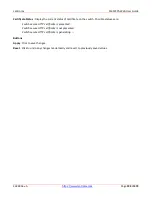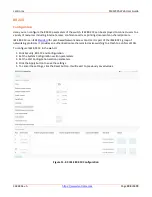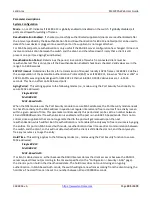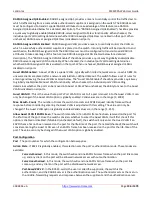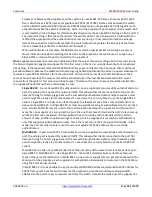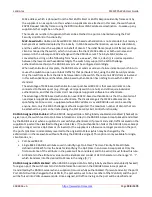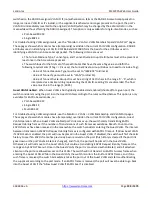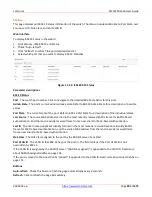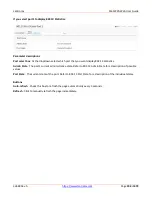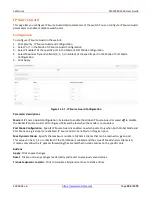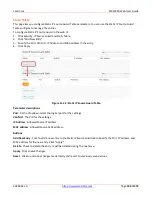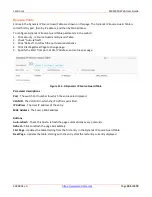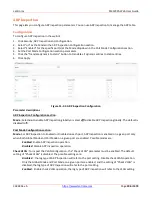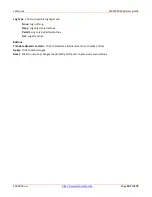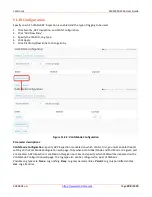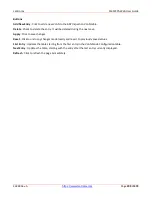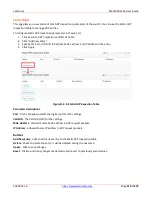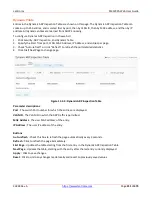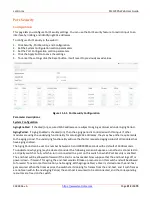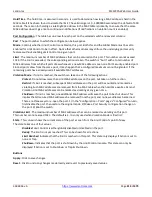
Lantronix
SM12XPA Web User Guide
33848 Rev. A
Page
198
of
473
MAC address, which is obtained from the first EAPOL Start or EAPOL Response Identity frame sent by
the supplicant. An exception to this is when no supplicants are attached. In this case, the switch sends
EAPOL Request Identity frames using the BPDU multicast MAC address as destination - to wake up any
supplicants that might be on the port.
The maximum number of supplicants that can be attached to a port can be limited using the Port
Security Limit Control functionality.
MAC-based Auth.:
Unlike port-based 802.1X, MAC-based authentication is not a standard, but merely a
best-practices method adopted by the industry. In MAC-based authentication, users are called clients,
and the switch acts as the supplicant on behalf of clients. The initial frame (any kind of frame) sent by a
client is snooped by the switch, which in turn uses the client's MAC address as both username and
password in the subsequent EAP exchange with the RADIUS server. The 6-byte MAC address is
converted to a string on the following form "xx-xx-xx-xx-xx-xx", that is, a dash (-) is used as separator
between the lower-cased hexadecimal digits. The switch only supports the MD5-Challenge
authentication method, so the RADIUS server must be configured accordingly.
When authentication is complete, the RADIUS server sends a success or failure indication, which in turn
causes the switch to open up or block traffic for that particular client, using the Port Security module.
Only then will frames from the client be forwarded on the switch. There are no EAPOL frames involved
in this authentication, and therefore, MAC-based Authentication has nothing to do with the 802.1X
standard.
The advantage of MAC-based authentication over port-based 802.1X is that several clients can be
connected to the same port (e.g., through a 3rd party switch or a hub) and still require individual
authentication, and that the clients don't need special supplicant software to authenticate.
The advantage of MAC-based authentication over 802.1X-based authentication is that the clients don't
need special supplicant software to authenticate. The disadvantage is that MAC addresses can be
spoofed by malicious users - equipment whose MAC address is a valid RADIUS user can be used by
anyone. Also, only the MD5-Challenge method is supported. The maximum number of clients that can
be attached to a port can be limited using the Port Security Limit Control functionality.
RADIUS-Assigned QoS Enabled
: When RADIUS-Assigned QoS is both globally enabled and enabled (checked) on
a given port, the switch reacts to QoS Class information carried in the RADIUS Access-Accept packet transmitted
by the RADIUS server when a supplicant is successfully authenticated. If present and valid, traffic received on the
supplicant's port will be classified to the given QoS Class. If (re-)authentication fails or the RADIUS Access-Accept
packet no longer carries a QoS Class or it's invalid, or the supplicant is otherwise no longer present on the port,
the port's QoS Class is immediately reverted to the original QoS Class (which may be changed by the
administrator in the meanwhile without affecting the RADIUS-assigned). This option is only available for single-
client modes, i.e.:
•
Port-based 802.1X
•
Single 802.1X RADIUS attributes used in identifying a QoS Class: The User-Priority-Table attribute
defined in RFC4675 forms the basis for identifying the QoS Class in an Access-Accept packet. Only the
first occurrence of the attribute in the packet will be considered, and to be valid, it must follow this rule:
•
All 8 octets in the attribute's value must be identical and consist of ASCII characters in the range '0' - '7',
which translates into the desired QoS Class in the range [0; 7].
RADIUS-Assigned VLAN Enabled
: When RADIUS-Assigned VLAN is both globally enabled and enabled (checked)
for a given port, the switch reacts to VLAN ID information carried in the RADIUS Access-Accept packet
transmitted by the RADIUS server when a supplicant is successfully authenticated. If present and valid, the port's
Port VLAN ID will be changed to this VLAN ID, the port will be set to be a member of that VLAN ID, and the port
will be forced into VLAN unaware mode. Once assigned, all traffic arriving on the port will be classified and

